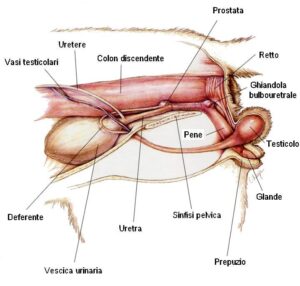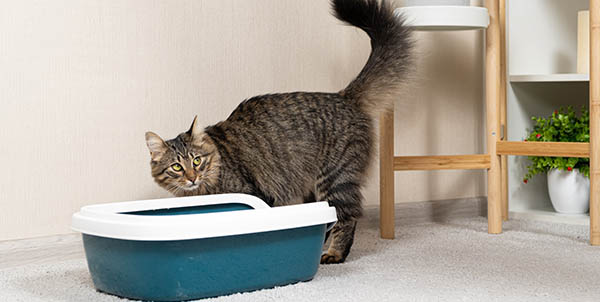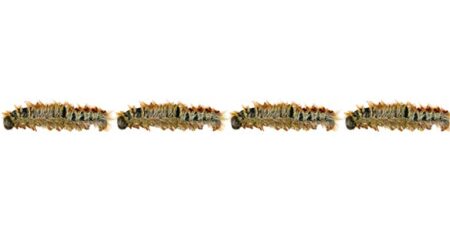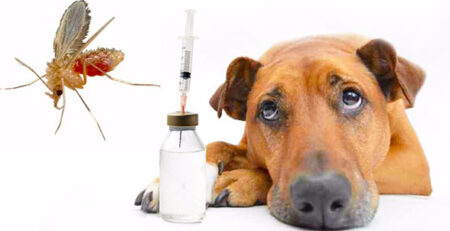Table of Contents
Cat urinary blockage and urethral obstruction: why your cat can’t urinate, what can obstruct the urethra, and how to help him empty his bladder.
Urinary blockage in the male cat is a condition that affects the kitty’s bladder and urethra.
In the male cat, lower urinary tract obstruction is quite common due to the conformation of the external genitalia.
Failure to urinate should always be interpreted as a medical emergency and requires immediate treatment because it can quickly put the animal’s life at risk.

Failure to urinate: anuria and dysuria
In general, a healthy adult cat pees 2-4 times a day.
When a urethral blockage is in progress in the cat, two different conditions can occur:
- l’
anuria
, that is, the total lack of urination
or
- the
dysuria
, that is, difficult, painful and scanty urination.
Therefore, it is vital that you pay attention to any behavioral changes in your cat.
How to tell if the cat is obstructed?
The initial symptoms manifested by the cat in urinary blockage are:
- Urination in places other than the usual
- presence of blood in the urine
- compulsive genital licking
- Attitude of difficulty in urinating comparable to constipation
- moaning and nervousness
In more advanced stages, however, they occur:
- vomiting
- inappetence
- lethargy
In the most severe cases, not noticing the problem in time, culling and collapse can lead the cat to death in 24 to 36 hours at most from the onset of the blockage.
How long can a cat go without peeing?
After 24 hours without urinating, the process of reabsorption by the body of urine waste products (potassium, urea, and creatinine) begins.
These substances eventually intoxicate the internal organs (heart, brain, gastro-enteric system) irreversibly.
The continuous filling of the bladder and its abnormal dilatation can degenerate into a rupture with urine pouring into the abdomen, severe peritonitis and shock state.
Why the cat can’t urinate: how obstruction occurs and what happens
Obstruction and blockage are due to the formation of a plug in the cat’s urethra.
Theurethra is wafer-thin: it is only 1.2-1.3 mm in diameter and also undergoes compression of the penis itself in its final stretch.
The plug that prevents the escape of urine and thus the emptying of the bladder, may be protein or blood (clot) in nature, but more frequently it is mineral in nature i.e., the much-feared struvite stones.
Struvite is a mineral found in cat urine at low dosages
In some specimens, however, some of the crystals from which struvite is composed eventually coalesce, creating stones within the cat’surinary tract, causing obstruction and inflammation such as cystitis.
Normally, stones and cystitis go hand in hand.
Struvite stones are mainly found in highly concentrated, high pH urine.
The main causes of struvite in cats can be traced to improper diet, poor fluid intake, overweight/obesity, and stress.
What to do if the cat can’t urinate?
The Veterinarian’s intervention must be more than timely: the priority is to empty the bladder by removing the obstruction at the urethra and administering the appropriate therapy to restore the metabolic imbalances to which the cat has gone.
Once disostricted, under sedation and through a catheter, the cat is kept under observation for a period of at least 24 hours, during which time urinary output and renal function values are monitored.
However, despite de-stoning, cats with a predisposition to stone formation may relapse.
Uretrostomy in case of recurrence
In case of recurrence, the Veterinarian may resort to a surgical procedure called urethrostomy.
Uretrostomy or feminization is a modification of theanatomy of the cat’s last urinary tract.
It consists of the removal of the penis while the urethra with a larger diameter and closer to the bladder is sutured to the skin between the anus and scrotum.
This will form a new opening through which the cat can urinate even if plugs form again.
Resolution of cat struvite stone issues usually comes through the assignment of a specific diet indicated by the Veterinarian.
Only proper nutrition and hydration will restore the normal pH of urine and its chemical composition.
Consult the veterinary doctors on our staff who are always available to you.
We also remind you that in case of need and urgency Clinica La Veterinaria is always open h24 every day including holidays and with First Aid service from 8 pm to 8 am.
Just for the joy of seeing them HAPPY.











